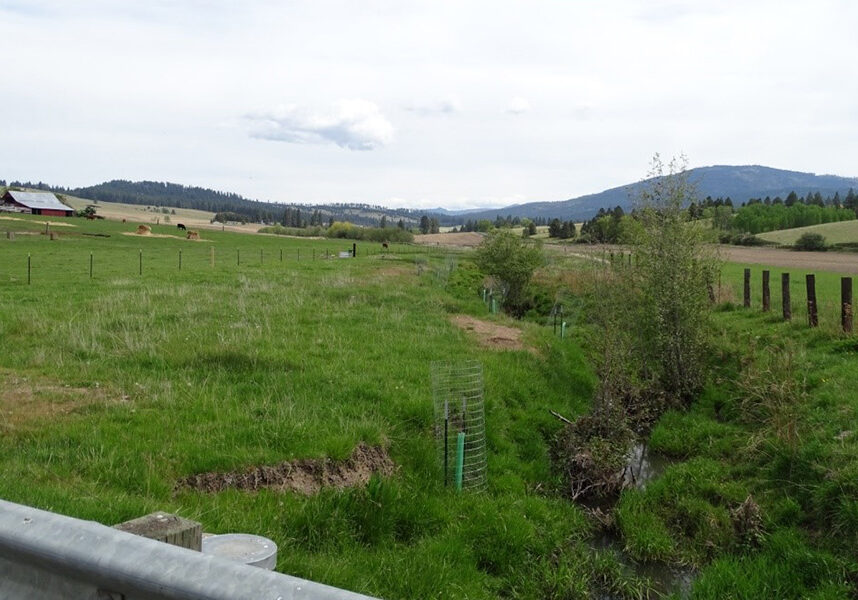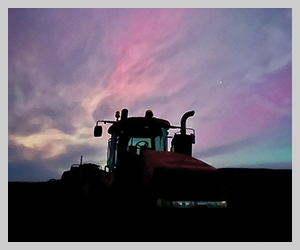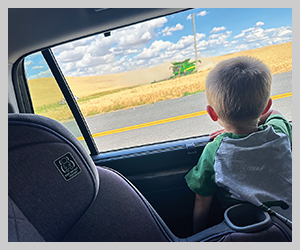Watershed work update Two reports mark Ecology's work on Hangman Creek water quality issues
2022December 2022
By Trista Crossley
Editor

This year, water quality work in the Hangman Creek Watershed was marked by two reports released by the Washington State Department of Ecology (Ecology): the “Nutrients and Sediment Pollutant Source Assessment, 2018,” that was released in May, and the “Hangman Settlement Agreement 2021 Annual Report,” released in August. Both documents detail Ecology’s efforts to improve water quality in the watershed and help set the stage for what comes next, namely that more work is needed despite significant improvements.
“The watershed is improving a lot. Water quality is improving, and there’s been a lot of really positive momentum in the watershed. We certainly remain committed to doing our work in a way that recognizes the value and importance of dryland agriculture production,” explained Chad Atkins, Ecology’s watershed unit supervisor for Eastern Washington. “This plays out with all the different projects we’ve been working on, that we really don’t have to choose between clean water and healthy, productive farms. We feel like we can have both.”

The assessment found that nearly all of the springtime sediment and phosphorus in Hangman Creek originates in the upper two-thirds of the watershed, while summertime total phosphorus ( about 60%) and dissolved inorganic nitrogen (about 95%) that reaches the mouth of the creek originates in the lower watershed and is associated with groundwater.
Nutrient, sediment assessment
The “Nutrients and Sediment Pollutant Source Assessment, 2018,” is the culmination of a multi-year study to evaluate current conditions and trends in Hangman Creek and quantify the sediment and nutrient reductions needed to meet total maximum daily load (TMDL) goals as established by Ecology in 2009 and 2010.
The assessment found that while sediment conditions in Hangman Creek have improved substantially over the last four decades — by almost 75% — they remain extremely high during the springtime high-flow season and show a “strong sensitivity” to agricultural management practices. The report concludes that meeting the TMDL for total phosphorus will require eliminating the vast majority of springtime sediment (95%) and phosphorus (76%) in the creek through a “transformational change in practices” throughout the watershed.
What does that mean for producers? According to Atkins, it’s expanding existing practices that reduce sediment delivery, such as conservation tillage and direct seeding, and improving riparian conditions that reduce bank erosion.
“Farmers have made a lot of progress on the conservation tillage piece and continue to do so,” he said. “That riparian piece is more of challenge, and so that’s something we are going to need to be focusing more on moving forward. We think we can meet water quality standards in the watershed. That’s the goal. We believe that by continuing the progress that has been made, we can get there.”
In the past few years, Ecology has invested more than $7 million in the watershed in the form of low interest loans for conservation tillage equipment, payments to cover the cost for direct seeding and custom seeding, and the cost for riparian restoration work. The department is partnering with the Spokane Conservation District on a $1 million pilot program that will reimburse producers for lost income created by riparian buffers by matching the value of the crop displaced by the buffer. Atkins said they’ve committed much of the $1 million already, which will address 80 to 100 acres of riparian area.
Adriane Borgias, Ecology’s water quality section manager, added that part of that transformational change is also on Ecology.
“We’ve listened to what landowners in that area want, and what they see as necessary to move forward. The project that Ecology and the Spokane Conservation District have going on with some of the reimbursement for lost use of land, etc., that’s a really new approach for us, and that’s transformational for us, too. It (transformational change) goes both ways,” she said.
In order to assess where the sediment and nutrients were coming from, the report breaks the watershed into subbasins. While nearly 100% of the sediment and phosphorus originated in the upper two-thirds of the watershed where dryland agriculture is the predominant land use, the report found subbasins in that area varied widely in their contributions. Little Hangman Creek, Upper Rock and Rock Creek Canyon subbasins were at the top of the list for sediment and phosphorus. Rattler’s Run and Rock Creek Canyon were top of the list for nitrogen. The difference between subbasins was not what the Ecology team had anticipated.
“(The report) showed that they all needed work, but it was interesting to see a couple of subbasins that kind of rose to the top in terms of the amount of work they needed. Maybe, on day one, we wouldn’t have thought that was the case,” Atkins explained.
The assessment recommendations include:
- Ecology, conservation districts, farm associations and other stakeholders should continue to promote and encourage the widespread adoption of agricultural best management practices (BMPs) that have been evaluated for their protection of water quality, such as conservation tillage, residue management and vegetated riparian buffers, among others.
- Ecology and other stakeholders should continue to implement BMPs that have been shown to be effective for mitigating human caused streambank erosion, and BMPs that reduce peak flow runoff, among others.
- Ecology and other stakeholders should also continue to work to reduce other nonpoint sources of nutrients, such as lawn fertilizer, septic tanks, and animal waste.
The “Nutrients and Sediment Pollutant Source Assessment, 2018,” report can be downloaded from Ecology’s website.
Settlement’s annual report
The annual report is a condition of the settlement agreement reached in 2018 between Ecology and the Spokane Riverkeeper. It describes the work Ecology and its partners did in 2021, including evaluation work, funding and outreach efforts. Atkins pointed out that work in the watershed isn’t solely focused on agriculture. One of the projects they just finished was moving several fairways on the Latah Valley Golf Course back from the creek and planting the stream banks. They’ve also installed educational signs about Hangman Creek in strategic locations.
“There’s a number of different efforts underway that we are hoping continues to move the ball forward,” Atkins said. As far as enforcement actions, Atkins said Ecology has contacted 78 producers since 2018, with the majority working on compliance and implementing changes. Ecology has issued three orders, which aren’t penalties but are issued after technical and financial assistance efforts have been exhausted. Orders ask landowners to implement specific actions to protect water quality. Two of the actions were for livestock sites; the other was a dryland agriculture site. If a landowner refuses to take action, the next step is to levy penalties.
“That’s typically the next step if we fail to implement an order. But again, 78 contacts, 3 orders and no penalties so far … so we really feel like we are making a lot of progress without having to use those regulatory tools,” Atkins said, adding that the two livestock sites are being implemented, and Ecology is in contact with the dryland producer.
The report also sets out priorities for 2022 that included completing a public survey, reviewing the settlement’s action plan and continued funding for watershed projects.
Borgias said both reports will help keep Ecology on track with water quality improvements in the Hangman Creek Watershed, and those improvements will benefit not only the stream, but farmers as well.
“In my mind, it comes down to muddy water, in the sense that during the winter or maybe extremely wet seasons, we get a lot of water coming down Hangman Creek, and it’s definitely a different color. That’s soil. That’s stuff that should stay on the ground and not go into the water,” she said. “So, it’s not just a water quality thing, it’s really just an overall health of the watershed and the viability of the businesses there, and I just think our work really combines with the interests of agriculture. We may have a different lens on it, but I think it’s completely compatible with what’s out there and how people use the land.”












